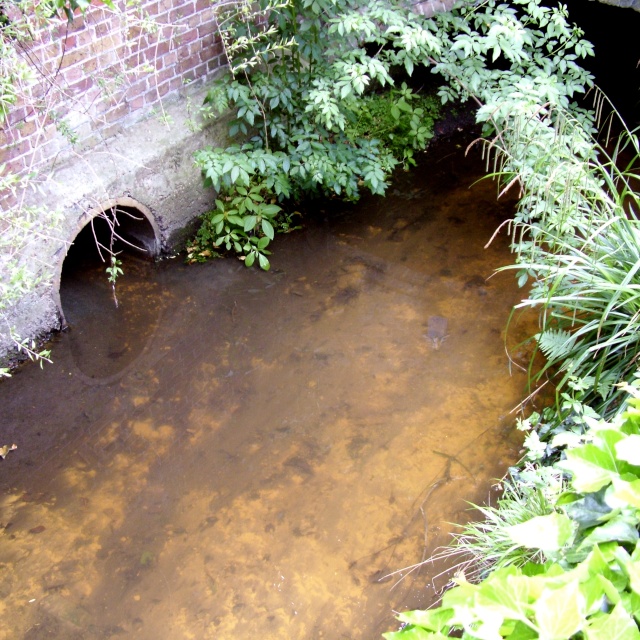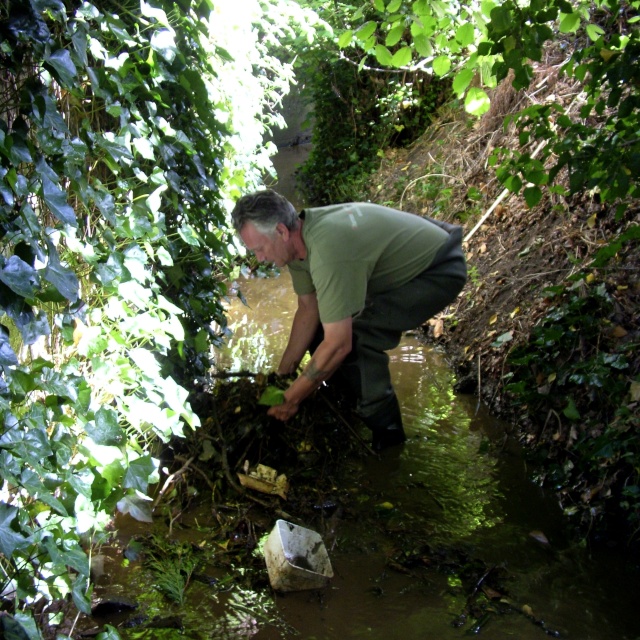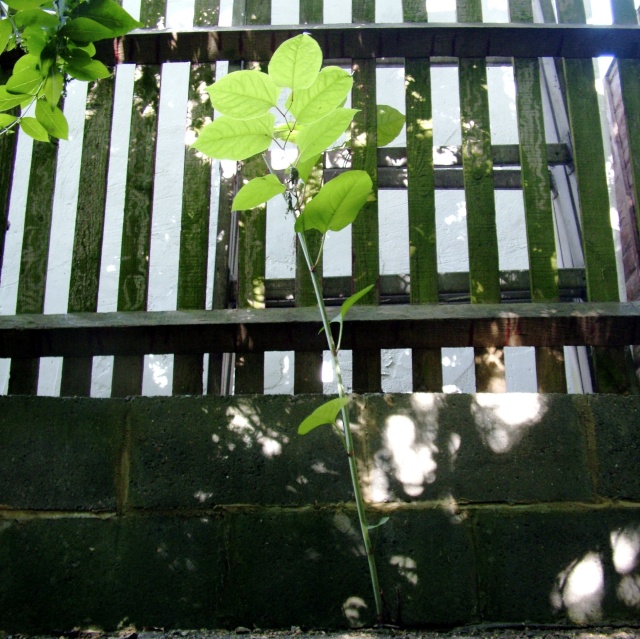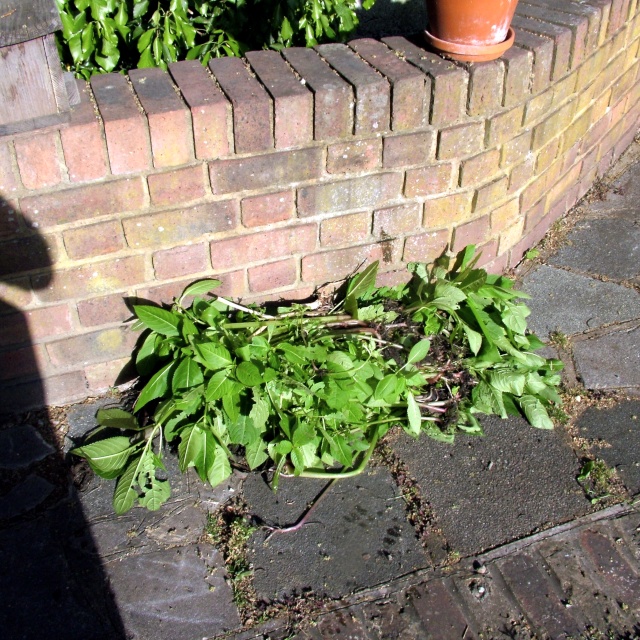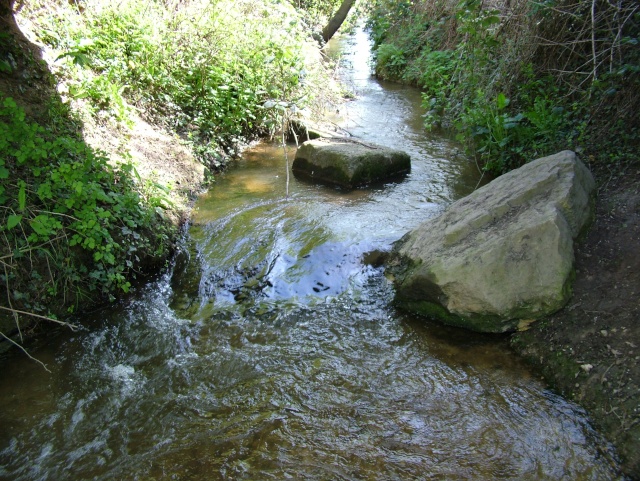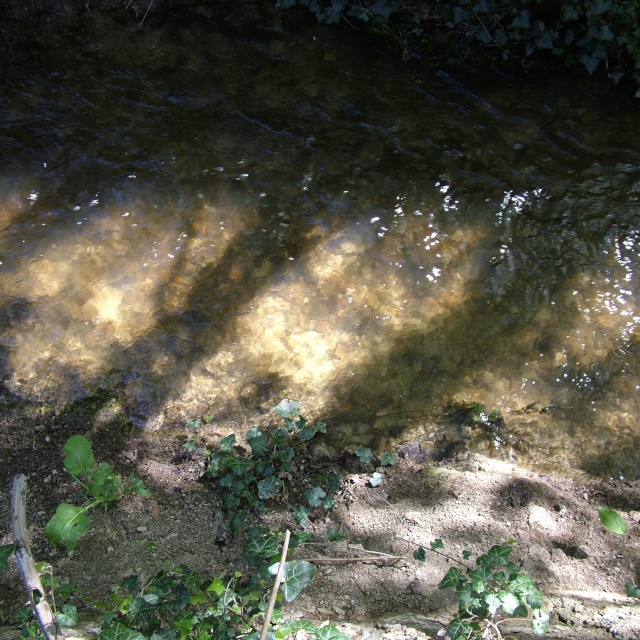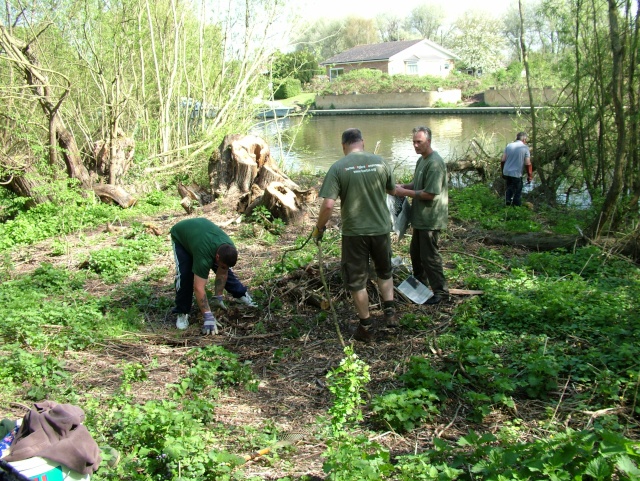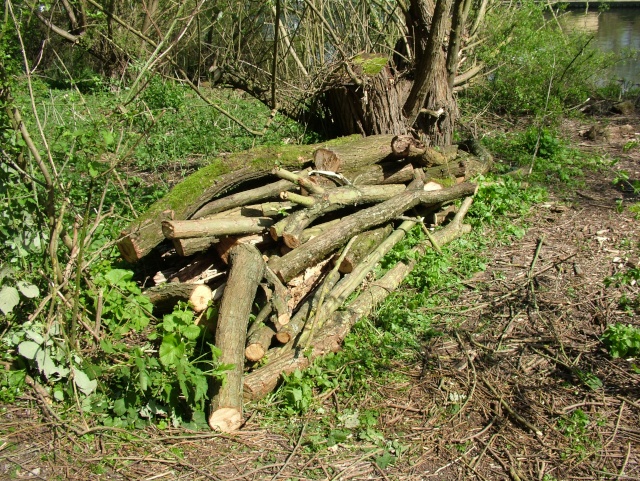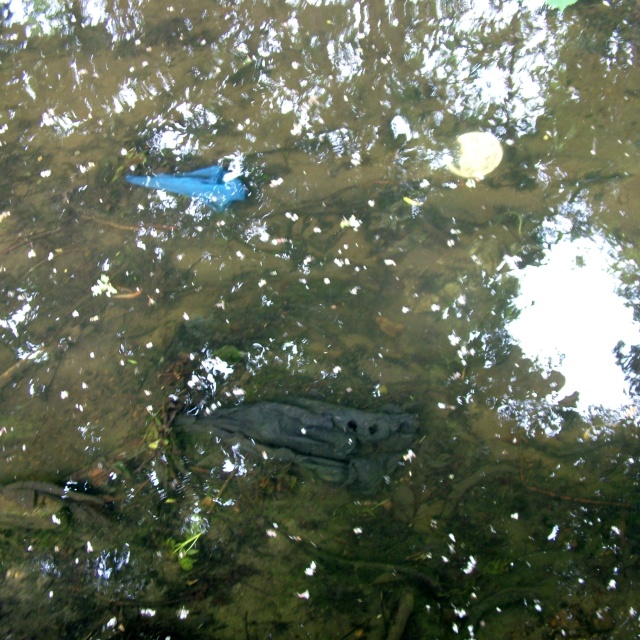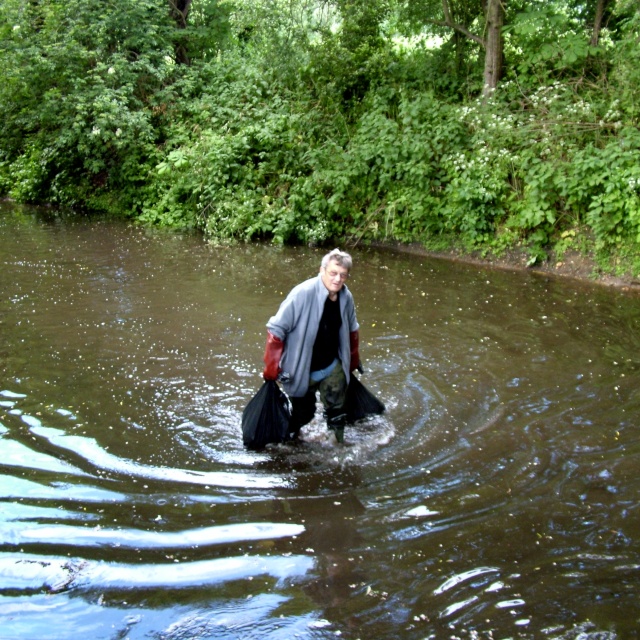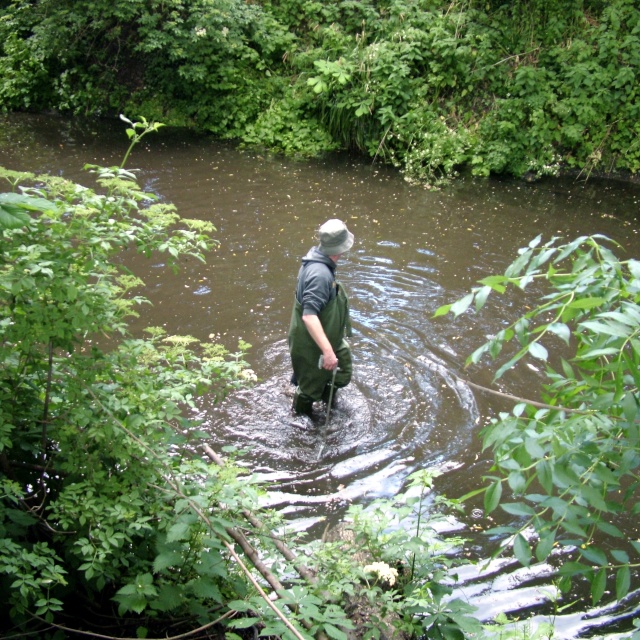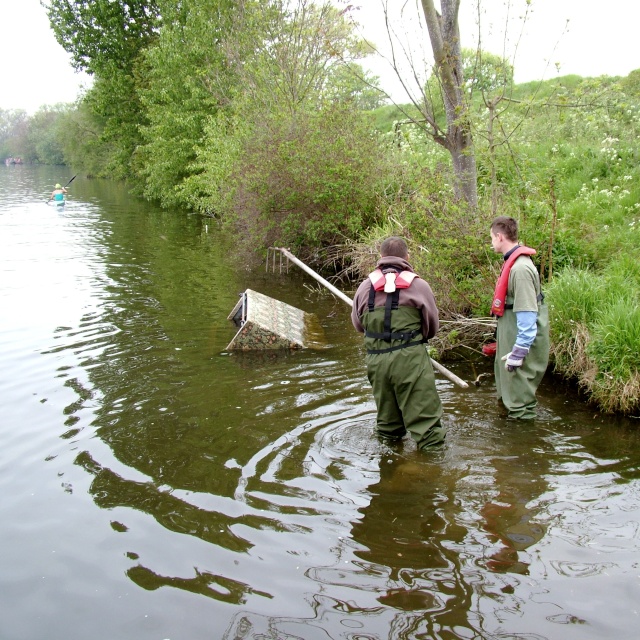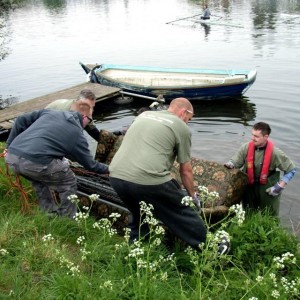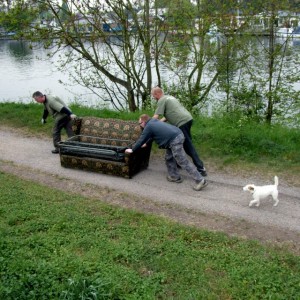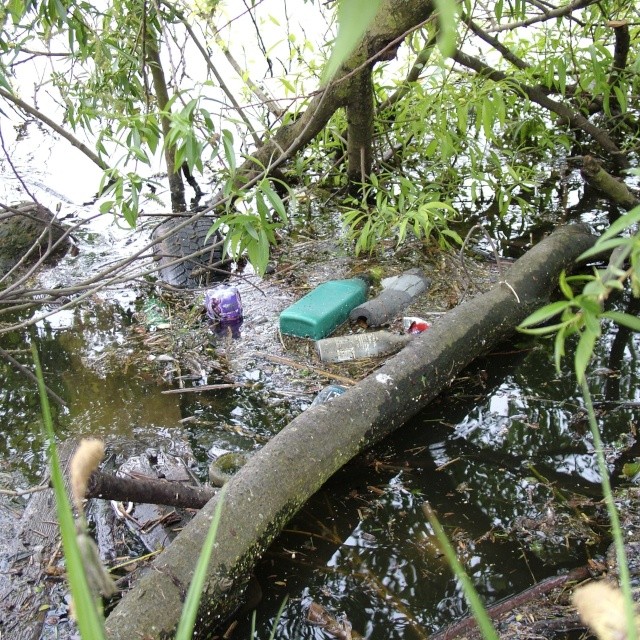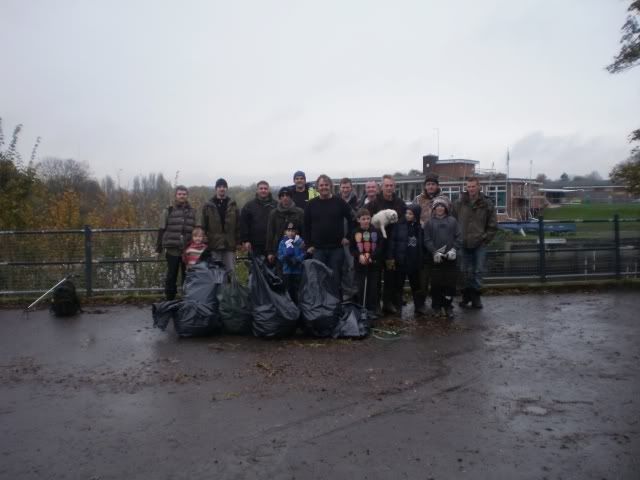-
- Buy a UK rod licence: EA Link
- 0800 807060 EA Hotline, Pollution, Poaching
- Thames Region River Levels
- Thames River Conditions
- Thames Temps and Clarity
- Thames Fishing Byelaws
- Thames Annual Tidefest
- Thames Record List
- Thames Eel Monitoring
- EA Annual Fisheries Report
- EA Flood Warnings
- Thames Sewage Discharge Notifications
- Thames Sewage Events
- Thames Tideway Tunnel
- River Thames Scheme: Reducing flood risk from Datchet to Teddington
- Martin Salter: Fighting for Fishing Blog
- Duncan Charmans World of Angling Blog
- Angling Trust
- Water and sewerage companies in England: environmental performance report 2013 – 2016
- EA Pollution incidents: 2014 evidence summary
- EA Pollution incidents: 2015 evidence summary
- River Crane and DNR Fisheries Impact assessment
- Links
Recent Tweets
Error retrieving tweetsNews Archive
Thames Anglers Conservancy at Penton Hook Island
Thames Anglers Conservancy volunteers including juniors, under the guidance of the Environment Agency Fisheries Team, are carrying a series of ongoing long term projects around Penton Hook Island.
The first project was to try to increase the flow through the important spawning channel that runs through the island. The flow had been reduced overtime by an accumulation of floating and sub subsurface debris from the main river. In areas silt had built up so creating less favourable habitat for fish to spawn.
The maintenance of the channel is ongoing to ensure it remains as the best habitat possible for fish, with regular clean ups of the main sluice. Work on any part where the gravels are will be left until later in the year, when it can be certain that the wildlife will not be affected and the flora are fauna is dying back.
The initial task was to remove branches and other detritus from the sluice gate, so to let more water flow down.
In clearing the sluice it raised the level of the channel by around three inches and created more flow, this in turn starting wash through the silt
Further along more issues where vegetation had built up hence reducing the flow. Volunteers carefully removed any obstructions along the entire length
An increase in flow and clarity farther downstream improving spawning grounds
More clean gravel where Chub have been spotted moving up through, a great sign for the health of the stream
In addition to the spawning channel, the Thames Anglers Conservancy are clearing the wood left by tree surgeons where it has blocked small paths and covered over areas of wild plants
The larger logs are being piled to create Beetle Stacks which encourage all manner of insects and small animals to a safe haven and natural environment
TAC
Posted in News
Tagged Environment Agency, Penton Hook, TAC, Thames
Comments Off on Thames Anglers Conservancy at Penton Hook Island
Thames Anglers Conservancy volunteers on the Beverley Brook
Thames Anglers Conservancy volunteers headed out for a Sunday morning clean up along a Thames tributary, the Beverley Brook.
A member who regularly walks the reach and had been doing litter picks, reported areas where rubbish was in the river and suggested a volunteer event.
Waders, litter pickers and bin bags were brought down and they set about the task in hand.
A supermarket bags and detritus on the river bed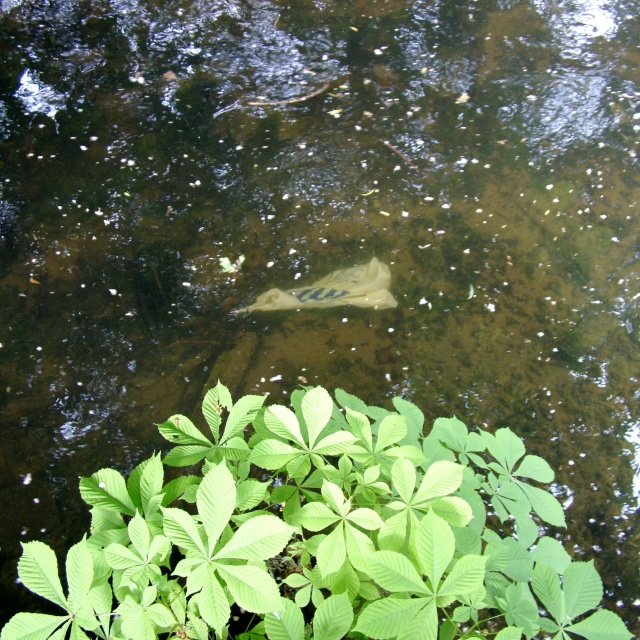
TAC volunteers removing filled bags
After a very enjoyable spring morning the volunteers cleared many bin bags of assorted rubbish, two car wheels, various pieces of timber, a push bike, numerous golf balls and road traffic cones.
Thanks again to everyone who came along and made a difference
TAC
Posted in News
Comments Off on Thames Anglers Conservancy volunteers on the Beverley Brook
Anglers Dismay at more Thames Hydropower Projects
Anglers Dismay at more Thames Hydropower Projects
The Thames Anglers Conservancy are dismayed that the Environment Agency is sacrificing yet more weir pools in the pursuit of renewable energy with its plans to sell the rights to develop Hydropower on three more weirs on the Thames. Those weirs – at Marlow, Boulters and Boveney – are in addition to the long-planned scheme at Romney, the recent three offered at Bell, Teddington and Sunbury. There are also schemes planned at Osney (an additional scheme to one already licensed at that site), Goring, Abingdon, and Sonning.
This is after promising in 2009 to the almost defunct Regional Fisheries, Ecology and Recreation Advisory Committee that no more schemes would be promoted by the Agency until the environmental effects of the scheme at Romney had been fully evaluated. The fact that Romney has yet to be built, mainly for financial reasons, is no excuse and as far as we know, no serious pre-project evaluations have even been carried out.
Weir pools are the heart of our heavily regulated rivers such as the Thames; the only sites to offer diversity of habitat and spawning opportunities for fish that use clean gravel shallows, such as Barbel, Dace, Chub and Trout. These habitats rely on the flow and energy of the water falling over the weir; Hydropower drastically reduces this flow for most of the time by diverting it through turbines and the energy of the effluent flow is much reduced. How can the Agency actively promote further schemes without knowing more about the consequences?
These latest schemes, in partnership with the Royal Borough of Windsor and Maidenhead, are in the name of the Big Society; whilst the Big Society should also be about preserving the river environment.
We urge the Environment Agency not to sanction further schemes on Thames weir pools until their impact is properly understood. The Thames Anglers Conservancy is working under guidance of the Angling Trust in assessing the ecological consequences of Hydropower schemes on the Thames.
The potential resource from hydropower in England is tiny – possibly 0.2% of our current electricity demand (DECC report) – yet the probable impact on our river fish populations is extremely damaging.
The Thames Anglers Conservancy are not against renewable energy from any sources, but it is pointless developing it, if it also destroys the environment.
Thames Anglers Conservancy volunteers are involved with many ongoing projects with the Environment Agency Fisheries team including habitat restoration.
Notes:
The Thames Anglers Conservancy are a free to join organisation, more information can be found at www.rivertac.org. For all enquires please email admin@rivertac.org
Posted in News
Tagged Angling Trust, Environment Agency, Hydropower, TAC
Comments Off on Anglers Dismay at more Thames Hydropower Projects
Help exterminate the Dirty Dozen asks British Waterways
British Waterways is today asking the green-fingered to be aware of the Dirty Dozen lurking in and around their garden ponds and in their fish tanks.
Often attractive ornamental aquatic plants and sometimes animals bought as pets or introduced unwittingly into our waterways. The Dirty Dozen are all invasive species introduced from overseas which can quickly choke canals and rivers and cause extensive harm to native wildlife.
Although introduced to the waterways by well-intentioned members of the public, the Dirty Dozen can quickly takeover, are often costly to remove and can decimate some of the nation’s best loved waterway creatures.
Chris John, British Waterways national ecologist, explains: “In their native countries these particular species are kept in check by nature, where they are part of an adapted system of predators. However, here they have no natural predators and so often quickly outcompete other plants, animals and fish, causing serious problems for wildlife, as well as choking up boats, the towpath and other 200-year old heritage structures such as locks and bridges.”
The Dirty Dozen have all been introduced to Britain’s canals and rivers from overseas, having made their way to our waters in many ways. Often, unaware of their potential to cause damage, people introduce species intended for garden ponds and aquariums to their local canal when they dispose of them, for example, throwing weed from fish tanks into canals or releasing Red-Eared Terrapins that have grown too big.
The Dirty Dozen plants and animals are:
-
Japanese Knotweed
-
Australian Swamp Stonecrop
-
Giant Hogweed
-
Himalayan Balsam
-
Water Fern
-
Floating Pennywort
-
American Signal Crayfish
-
Zebra Mussel
-
Zander
-
Mink
-
Red-eared Terrapin
-
Chinese Mitten Crab
Chris continues: “The destruction of suitable places for wildlife to live is the biggest threat facing Britain’s nature today, these species add to this problem by taking more than their fair share of space, water and sunlight. I am therefore asking people to help us by disposing of these plants and animals safely and carefully selecting alternative plants for their gardens, ponds and aquariums.”
Posted in News
Comments Off on Help exterminate the Dirty Dozen asks British Waterways
Non EA Rod Licence Website Applies Unneccessary Charges to Anglers
The Angling Trust is warning all anglers NOT to buy their licence from the commercial fishingrodlicence.com web site, unless they want to pay an unnecessary extra charge of £14 for checking over their application. This service is of no real benefit to anglers because the Environment Agency (EA) does not require applications to be checked before submission. The web site has been set up this year and comes top of a Google search for “Rod Licence”. In addition to the extra charge, anglers buying their licences from the web site will not be able to go fishing until they receive their licence in the post. The EA site offers a receipt and reference number which does allow people to fish while they are waiting for the licence to arrive.
The Angling Trust strongly recommends that all freshwater anglers buy their licence direct from the Environment Agency over the phone or via its website at www.environment-agency.gov.uk/homeandleisure/recreation/fishing/31497.aspx, or from Post Offices and clearly authorised outlets. The representative body for all anglers will also be writing to Consumer Direct to complain about the web site and raising the matter with Fisheries Minister Richard Benyon MP and Charles Walker, Chair of the All Party Parliamentary Angling Group.
Mark Lloyd, Chief Executive of the Angling Trust said: “This site offers no real extra service, but demands a 50% surcharge on top of the rod licence fee and we urge all anglers to spread the word. We would encourage members who have concerns about this website to contact Consumer Direct and their MP. Any unsuspecting new anglers trying to buy their first licence might be put off by the inflated price and decide not to take up fishing.”
For more info about writing to Consumer Direct go to www.oft.gov.uk/consumer-advice/oft-and-cd
To find your MP go to findyourmp.parliament.uk
Please make your fishing friends aware of this by clicking HERE to forward them this email.
Please do not forward using Outlook or any other e-mail software; if the recipient clicks on the unsubscribe link then you may not receive e-mails from us in future.
Environment Agency Statement:
We are aware of a website that offers a “rod licence application processing service”. It claims to offer “a comprehensive application service for any angler wishing to obtain a rod license.” It will “check over your application, ensuring there are no errors (for example forename switched with surname, lack of capitalisation in your name, and any obvious spelling errors).”
You pay an additional charge for this service, for example, the service charge for processing a full annual coarse and trout licence is £14, which you pay on top of the £27 licence duty.
The Environment Agency has no connection with this website, nor does it endorse its services.
The service appears to be legal, however, we would like to point out that –
a)
the Environment Agency does not require this check when someone buys their licence through the Agency’s website, over the counter at the Post Office or over the phone. An angler only has to give their name, age, proof of concession where necessary, and post-code and house number – a quick address search completes the rest;
b)
when you buy direct from the Environment Agency’s website at www.environment-agency.gov.uk/homeandleisure/recreation/fishing/31497.aspx, at the Post Office or over the phone, you only pay the licence duty – you do not pay any additional charge;
c)
when you buy a licence direct from our website at www.environment-agency.gov.uk/homeandleisure/recreation/fishing/31497.aspx or over the phone, you are given a licence reference number and receipt. This allows you to go fishing while we send you your licence in the post. We are not aware that this service can provide such an immediate response, so anglers may not be able to go fishing immediately they have paid for their licence.
Posted in News
Comments Off on Non EA Rod Licence Website Applies Unneccessary Charges to Anglers
Thames Water fined for Pollution entering the Basingstoke Canal
A water company which allowed untreated sewage to enter a Woking canal, killing hundreds of fish, was today (Friday) ordered to pay a total of GBP17,403 by magistrates.
Thames Water, based in Reading, admitted a charge of allowing polluting matter to enter the Basingstoke Canal and was fined £12,000, made to pay £5,388 costs and a £15 victim surcharge by Woking Magistrates’ Court. The charge was brought under the Water Resources Act 1991.
Environment officer Ruth Clayden was called to the canal at Boundary Road, Woking, at around 8am on September 7 2009. She walked under the road bridge and noticed a discharge coming from the surface water outlet, which was entering the canal on the right hand bank looking downstream.
The water was cloudy, with a strong smell of sewage and a number of fish were seen either dead or gasping for air on the surface. Readings taken upstream of the discharge point at 9.55am showed: Dissolved Oxygen (DO) levels were 44.8% and Ammonium (NH4+) levels were 3.24 milligram’s per litre (mg/l).
A reading taken near the discharge point at 10.05am showed DO levels were 5% and Ammonium (NH4+) levels were 33.27 mg/l.
Fisheries officer Dominic Martyn arrived at 11.20am and walked further downstream with the environment officer. More readings were taken and 35 dead fish were seen over a 200-metre stretch from the discharge point. This number contained roach, bream, perch and gudgeon.
Thames Water were contacted and arrived late morning as they were working on a blocked sewer in Victoria Way, which was cleared soon after. The environment officer took another reading at the discharge point and the ammonium reading was recorded as 12.51 mg/l, a decrease since the blockage had been cleared.
Ruth Clayden walked downstream again in the afternoon and although fish seemed fine at the end of the stretch of the affected water, roughly 420 metres downstream, they were still gasping near the discharge point so it was decided that Thames Water would install aeration equipment.
The Environment officer attended the scene with a colleague the following day and more readings were taken but these showed DO levels were still low. Thames Water contractors confirmed aeration equipment did not arrive until 6.30pm the night before and had been switched off overnight.
On September 9 Thames Water gave Ruth Clayden some readings over the phone which showed DO had marginally increased. It was decided to deploy two more aeration kits and the Environment Agency gave permission for Thames Water to tanker several loads of clean water from the nearby Goldsworth Park balancing pond.
On the morning of September 10 Thames Water called and gave more readings which showed the pollution was still bad but a further reading taken on site by Ruth Clayden at 2pm showed the equipment was having a positive effect on DO levels.
Thames Water called to say 230 dead fish had been counted. The aeration equipment was removed in the afternoon of September 11 due to rising oxygen levels and the canal was monitored over the weekend.
Readings taken by Ruth Clayden on Monday 14 September showed DO readings were now at a level not to cause any harm to fish in the canal.
During an interview under caution on December 15 2009 Simon Rawles, Thames Water’s Area Network Manager, accepted the company was responsible for the sewers in the Woking area. He admitted a blockage was found in the foul sewer where two drain rods, which have since been removed, had collected fat, oil and grease.
He said once this blockage had been cleared the pollution had stopped. Although foul sewers and surface water sewers in the surrounding area were investigated, no structural defects or misconnections that could be connected to the pollution incident could be found.
Ruth Clayden, who investigated the incident for the Environment Agency, said: “This was a distressing incident and it was upsetting to see so many fish either dead or gasping for life. The area is popular with anglers due to its urban location, and is fished regularly.
“Water companies have a statutory duty to maintain their sewers, which Thames Water had not done in this case. It sends a clear message to other companies that if you fail in your environmental responsibilities you may be prosecuted.”
Posted in News
Tagged Environment Agency, Fish KIll, Sewage, Thames, Thames Water
Comments Off on Thames Water fined for Pollution entering the Basingstoke Canal
Thames Anglers Retrieve a Sofa from the River
Sunday 18th April saw our volunteers out again, this time following up on a report that a sofa had been dumped into the marginal Lower Thames
It is not clear how this may have been dumped but seems possible that it was from a passing boat, from the bankside it was situated too far out.
Armed with a long rake kindly lent by the Teddington Lock Keeper, volunteers dragged the sofa close to the bank where it could be removed as a hazard to river users and before it started to decay and pollute the river.
As our volunteers moved farther along, more debris was seen and retrieved.
The result of what was collected was one car wheel and two tyres, a full aluminium beer keg, a 5 gallon plastic container, a 5 litre water bottle, four boat cushions, a sofa-bed and volunteers managed to fill four large bin bags with litter.

To round off a very enjoyable and satisfying morning, on arriving back at Teddington, Jeff the Lock Keeper greeted us with a cup of tea and a few laughs.
Thanks to all the staff down at Teddington and all the locks for always making us feel very welcome.
TAC
Posted in News
Comments Off on Thames Anglers Retrieve a Sofa from the River
Preliminary Suggestions for Marine Conservation Zones Revealed
South Suffolk, Essex, Thames and North Kent
Preliminary suggestions for marine conservation zones revealed
The Balanced Seas Marine Conservation Zone Project, which is developing the recommendations for Marine Conservation Zones in the south-east, reached a significant milestone on 28 February 2011 with its Third Progress Report. A summary of the report has now been launched to reach a wider audience which shows the current status of sites under discussion for the South Suffolk, Essex, Thames and North Kent area. The recommendations will be finalised by the end of August this year, with designation of sites at the end of 2012 following a public consultation.
Marine Conservation Zones will protect nationally important biodiversity, including certain rare and threatened species and habitats. There is a wealth of life teeming within the estuaries and coastal seas in the south-east. The South Suffolk, Essex, Thames and North Kent region is characterised by numerous estuaries and extensive offshore sand banks. The area encompassing the Blackwater, Crouch, Roach and Colne estuaries is famous for Native Oyster populations and is also the only place in the south-east where the tiny Lagoon Sea Slug occurs.
A Marine Conservation Zone for this area would be aimed at ensuring the sustainable management of the oyster fishery and the attractiveness and health of this popular recreational area. The Thames Estuary is also being discussed as a future Marine Conservation Zone because it has one of the largest populations of the rare Tentacled Lagoon Worm as well as important nursery areas for smelt. Other sites being discussed include the Goodwin Sands (one of the largest sandbanks in the region), the underwater chalk ledges of the Thanet coast that harbour a diverse community of rare plants and animals, and the rich and productive estuaries of the Medway and Swale.
The Balanced Seas Regional Stakeholder Group, made up of 34 people who use or have an interest in the sea, with the support of the project’s three Local Groups, has identified these areas. The sites are not final agreed recommendations and are still subject to change, including to the boundaries. Potential protection levels will be suggested by the same groups and will be variable at each site: activities will not be restricted unless they are likely to cause damage to the features being protected. As a result, many activities will be able to continue in a Marine Conservation Zone.
The project is moving quickly and Balanced Seas wants to make sure that those with an interest in the sea fully understand the work and what it will mean to them. The summary leaflet has been designed to help stakeholders understand the progress being made and the process being used to identify sites. It can be downloaded from the Balanced Seas website or hard copies can be requested by calling 01227 827839.
Balanced Seas project manager, Sue Wells, said, “For the first time in the UK, marine protected areas are being recommended by people with a real interest in the sustainable management of the sea and its resources. We are very grateful to the Regional Stakeholder Group and the three Local Groups who have worked extremely hard to get to this point. They have been engaging with a large variety of complex information and have been working collaboratively to try to meet the targets.”
Sue continues, “This summary leaflet allows all those with an interest in the south-east sea to pick up a copy and at a glance see what areas are being discussed by the stakeholder groups and why they are being considered.
We urge people to take a look and feedback their views through their sector representative on one of the stakeholder groups.”
To download the leaflet and to contribute to the Marine Conservation Zone process, please visit www.balancedseas.org
Balanced Seas’ Third Progress Report and summary leaflet can be found here:
Posted in News
Comments Off on Preliminary Suggestions for Marine Conservation Zones Revealed
Thames Anglers Conservancy, A Season of Direct Action
Over 200 bags of rubbish, shopping trolleys and much more, its was quite a first season for Anglers cleaning up the Thames
Fed up with seeing litter on the riverbank and hearing Anglers sometimes get the blame, the Thames Anglers Conservancy decided to do something about it.
Starting out with gloves brought from home, a single litter picker and bin bags donated by Surbiton Angling Centre, our volunteers set about picking up the assorted debris and litter from the banks of the River Thames.
With suggestions of areas coming from Anglers, the Environment Agency and even resident associations, TAC volunteers including youngsters brave all weather conditions regularly to clean the riverbank. Along with these suggestions, a list of known problem areas are regularly targeted with our events taking place every two weeks or more. In the height of last summer we had volunteers out midweek as well as weekends, direct action as and when it was needed.
Our first year of action on the Thames culminated with an end of the river season margin clearing event at the riverside in Kingston. To hold the rubbish, the Environment Agency kindly lent a barge and the local Turks Launch provided free mooring at their pier. Using our members’ boats and donated grappling hooks attached to ropes, TAC volunteers made their way along the margins until the barge was full of Kingston’s rubbish.
The list of what has been collected over the fishing season highlights the variety of people that use the river and the apparent disregard some of them have for our environment. During cleans up we have collected a full array of bikes, shopping trolleys, televisions, car wings, cut timber, steel plates, plus loads of other junk and the filled industrial bin bag total is now in excess of 200 and rising.
Perhaps more crucially, it proves that those who picnic, live, shop, work, walk their dog, cruise their boat and fish are all contributors to the problem in varying degrees.
Chairman James Page commented ‘The litter and rubbish we find is not all anglers, but what we have proved is that as anglers, we are willing to go out and make a difference, for free. I would like to thank all the volunteers who come out with us and give up their time, many on a regular basis to improve our riverside environment’
Notice to editors:
The Thames Anglers Conservancy is a free to join organization and is a consultative member of the Angling Trust for Thames between Staines and Dartford.
As a Thames Angling stakeholder, we are involved with many organizations including the Environment Agency, river user groups and local councils.
We are concerned with many aspects of the Thames including the threat of Hydropower, loss of fishing rights and pollution along with the positive aspects of promoting angling and its benefits.
For more pictures and information go to www.rivertac.org or email admin@rivertac.org
Posted in News
Comments Off on Thames Anglers Conservancy, A Season of Direct Action


